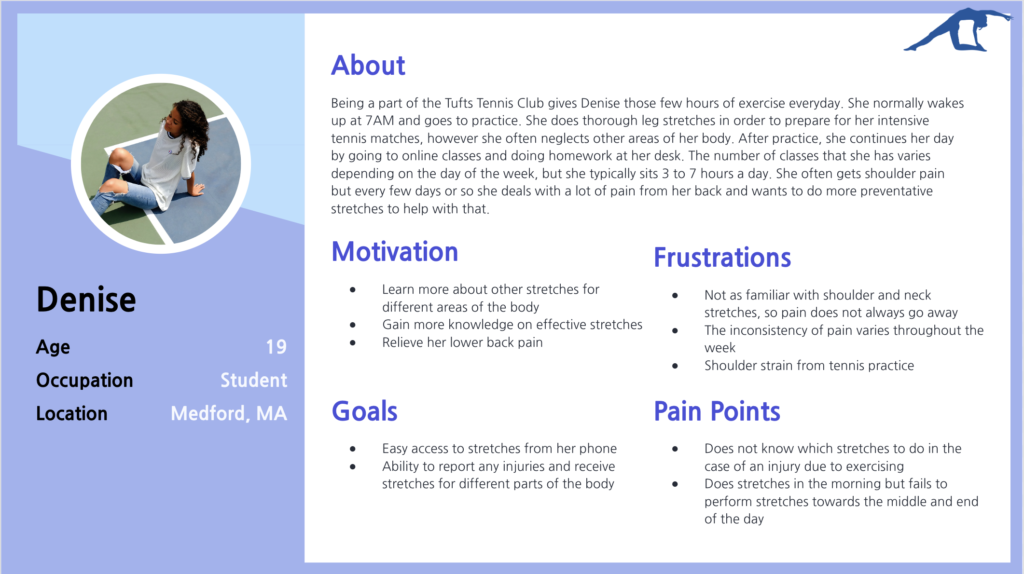FLEXA
Role
Co-Project Manager
Outreach manager
UX Designer
Tools
Figma
Adobe Photoshop
Miro Board
Overview
Over this past year, many of us experienced a big shift in our daily lives. With the pandemic, many have had to shift to working remotely from home. Working long hours on the computer, people are experiencing pain from sitting too long. With FLEXA, we offer a solution to our users. FLEXA, paired with silicon-based sensors (IMU and EMG sensors), will help users identify poor sitting postures and habits. FLEXA then recommends solutions that target the user’s specific areas of pain through preconfigured stretching regimens and a library of stretches to select from.
USER RESEARCH
To learn more about our problem, we began by brainstorming what our typical users would be like. After some initial brainstorming, we decided to get more qualitative insight and sent out a survey to gauge users’ pain points, behavior, and attitude towards remote working at the desk and stretching.
Out of 35 respondents, we found:
• 40% of respondents spent 7-9 hours at the desk daily, while 22.9% spent over
• 9 hours sitting at the desk.
• 45.2% of respondents did not use any assistive items or devices (back pillow, laptop stand, back brace) to help their sitting posture.
• 66.7% of respondents experience pain in their lower back and 42.4% of respondents experience neck and upper back pain.
Solidifying that pain from sitting too long was extenuating on the body for users, we sought to learn more about remedial stretching for areas of pain. Thus, we interviewed local experts at Tufts from the occupational therapy department and dance department. They gave us plenty of insight into what makes a stretch effective and recommended stretches and poses for targeted areas of pain. From our interviews, we were able to begin putting together a list of stretches to build off of in our research.
USER PERSONAS
Based on our initial survey, we put together three different personas that reflected the type of users we expect to use our app. Here, we have Aisha, André, and Denise, who are all college students, but have different habits sitting at the desk.
TASK ANALYSIS
To understand how our users would use our app, we created a work flow chart and conducted task analysis. For the actions we determined our users to perform, we considered the psychological, cognitive, emotional, and informative analysis of each action. This allowed us to delve deep into how our users may respond, act, and feel when using our app. Task analysis is crucial for an app like ours that aims to remedy physical conditions that directly affect a client’s mood and long-term behavior.


Final prototype
Discussion
This was an exciting and new project I was happy to be apart of. Working remotely with a team of 6 people all in different places, I learned to communicate clearly and promptly to meet deadlines and satisfy our client's goals. This is an ongoing project this summer 2021, and I am excited to say that we are working on further developing the app to get it realized in the app store.



